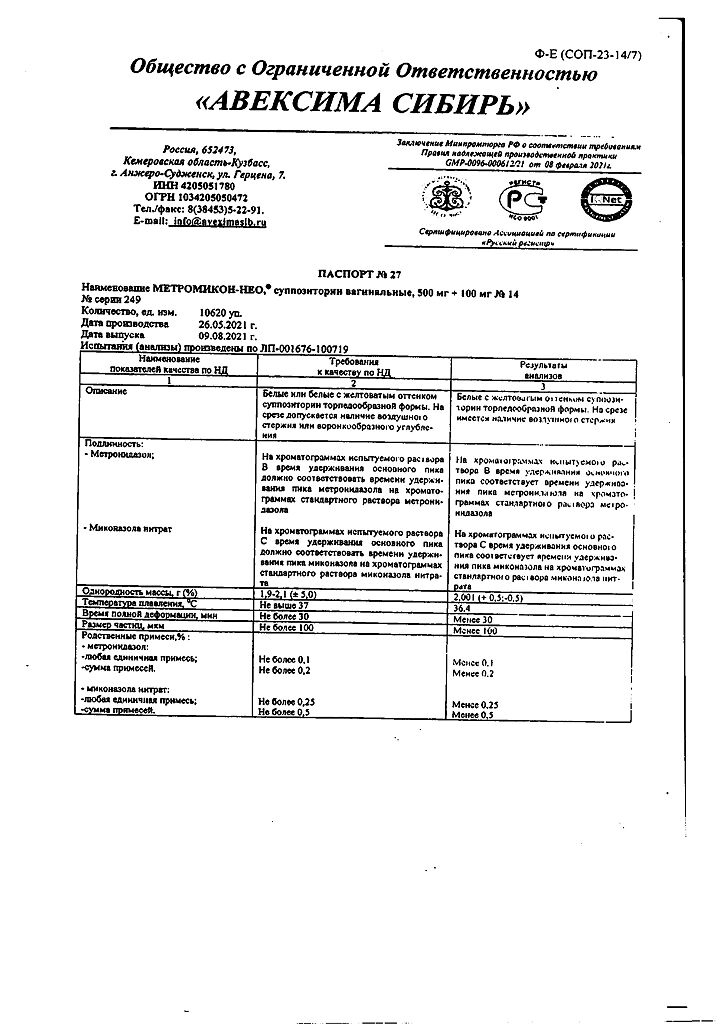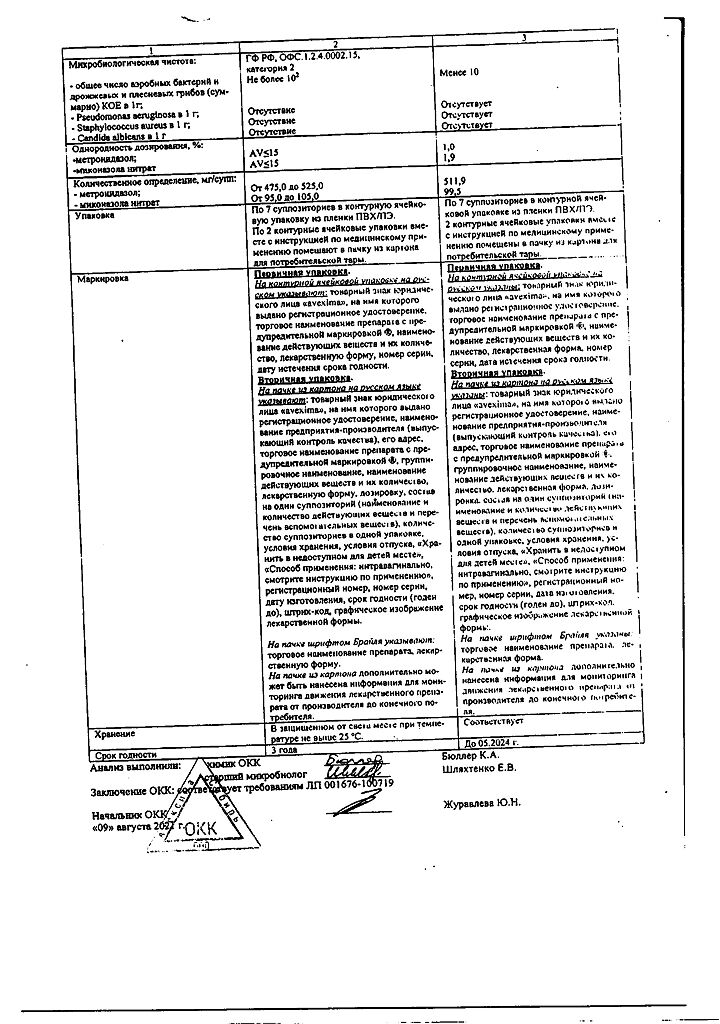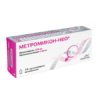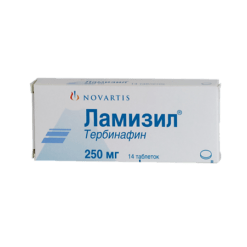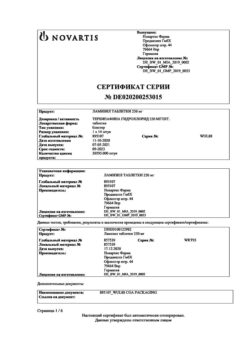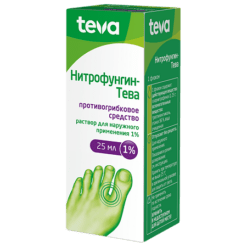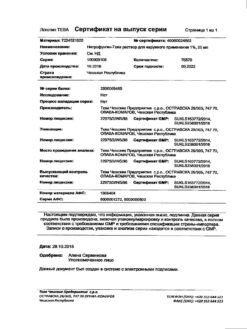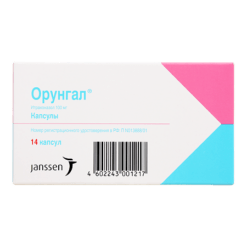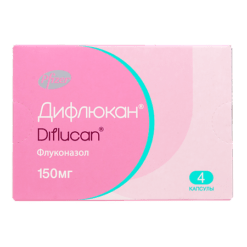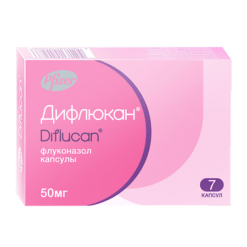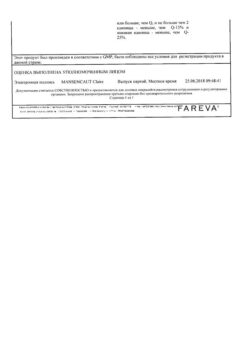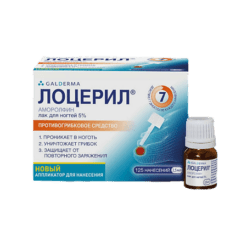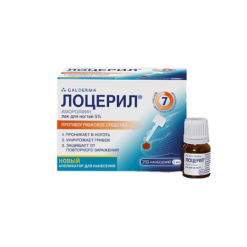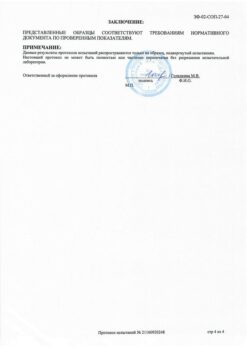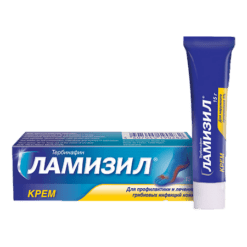No products in the cart.
Metromicon-Neo, vaginal suppositories 500 mg+100 mg 14 pcs
€15.32 €14.76
Description
Metromicon-Neo is a combined drug with antiprotozoal, antifungal and antibacterial action.
Metronidazole is active against Gardnerella vaginalis; protozoa: Trichomonas vaginalis, Giardia intestinalis, Entamoeba histolytica; anaerobic gram-negative bacteria: Bacteroides spp. (B. fragilis, B. diestasoinis, B. ovatus, B. thetaiotaomicron, B.vulgatus), Fusobacterium spp, Prevotella spp. (P. bivia, P. buccae, P.disiens); anaerobic gram-positive bacteria: Clostridium spp., Eubacterium spp.; anaerobic gram-positive cocci: Peptococcus spp., Peptostreptococcus spp. Aerobic microorganisms and facultative anaerobes are resistant to metronidazole. The mechanism of action is due to the biochemical reduction of the 5-nitrogroup of metronidazole by intracellular transport proteins of anaerobic microorganisms and protozoa. The reduced 5-nitrogroup of metronidazole interacts with the DNA of the microbial cell, inhibiting the synthesis of their nucleic acids, which leads to the death of the bacteria.
The most sensitive to miconazole are dermatomycetes and yeasts. It is active against the causative agent of variegated lichen (Malassezia furfur), causative agents of some dermatomycoses (Candida albicans, Trichophyton, Epidermophyton floccosum, Microsporum).It shows activity against Dimorphons fungi, Cryptococcus neoformans, Aspergillus spp, Pityrosporum, Torulopsis glabrata, Pseudallescheria boydii; some gram-positive microorganisms, including staphylococci and streptococci. Fungicide and fungistatic effect of myconazole nitrate is due to inhibition of ergosterol biosynthesis of the shell and plasma membranes of fungi, changes in lipid composition and cell wall permeability, causing cell death of fungus.
Indications
Indications
Vaginal infections:
vaginal candidiasis;
trichomonas vaginitis and vulvovaginitis, bacterial vaginosis;
mixed vaginal infection.
Pharmacological effect
Pharmacological effect
Metromicon-Neo is a combined drug with antiprotozoal, antifungal and antibacterial effects.
Metronidazole is active against Gardnerella vaginalis; protozoa: Trichomonas vaginalis, Giardia intestinalis, Entamoeba histolytica; anaerobic gram-negative bacteria: Bacteroides spp. (B. fragilis, B. distasonis, B. ovatus, B. thetaiotaomicron, B. vulgatus), Fusobacterium spp., Prevotella spp. (P. bivia, P. buccae, P. disiens); anaerobic gram-positive bacteria: Clostridium spp., Eubacterium spp.; anaerobic gram-positive cocci: Peptococcus spp., Peptostreptococcus spp. Aerobic microorganisms and facultative anaerobes are resistant to metronidazole. The mechanism of action is due to the biochemical reduction of the 5-nitro group of metronidazole by intracellular transport proteins of anaerobic microorganisms and protozoa. The reduced 5-nitro group of metronidazole interacts with the DNA of microbial cells, inhibiting the synthesis of their nucleic acids, which leads to the death of bacteria.
The most sensitive to miconazole are dermatomycetes and yeast. Active against the causative agent of pityriasis versicolor (Malassezia furfur), causative agents of some dermatomycosis (Candida albicans, Trichophyton, Epidermophyton floccosum, Microsporum). Shows activity against Dimorphons fungi, Cryptococcus neoformans, Aspergillus spp., Pityrosporum, Torulopsis glabrata, Pseudallescheria boydii; some gram-positive microorganisms, including staphylococci and streptococci. The fungicidal and fungistatic effect of miconazole nitrate is due to inhibition of the biosynthesis of ergosterol in the membrane and plasma membranes of fungi, changes in the lipid composition and permeability of the cell wall, causing the death of the fungal cell.
Special instructions
Special instructions
When using the drug, you should refrain from sexual intercourse. In order to avoid re-infection, simultaneous treatment of the sexual partner is necessary. In the case of trichomonas vaginitis, it is advisable to simultaneously treat the sexual partner with metlbnidazole for oral administration.
During treatment and for at least 24-48 hours after the end of treatment, ethanol should be avoided (ethanol intolerance is possible).
The simultaneous use of the drug with contraceptive diaphragms and rubber or latex condoms is not recommended (possible interaction with suppositories).
If there is severe irritation of the vagina, treatment with the drug should be discontinued.
Suppositories should only be used intravaginally and should not be swallowed or used in any other way.
If the drug is used together with metronidazole for oral administration, especially with a repeated course, monitoring of the peripheral blood picture is necessary (danger of leukopenia).
Impact on the ability to drive vehicles and control potentially dangerous mechanisms: caution is recommended, since a possible negative impact on the ability to drive a vehicle and control complex mechanisms cannot be excluded. If side effects from the central nervous system occur, you should refrain from driving vehicles and working with potentially dangerous mechanisms.
Active ingredient
Active ingredient
Metronidazole, Miconazole
Composition
Composition
Active ingredients:
miconazole nitrate – 100 mg,
Metronidazole – 500 mg.
Excipients:
semisynthetic glycerides.
Pregnancy
Pregnancy
The use of the drug is contraindicated in the first trimester of pregnancy. Use in the second and third trimesters of pregnancy is possible only if the potential benefit to the mother outweighs the possible risk to the fetus.
If it is necessary to prescribe the drug during lactation, breastfeeding should be discontinued, since metronidazole passes into breast milk. Breastfeeding can be resumed 24-48 hours after the end of treatment.
Contraindications
Contraindications
hypersensitivity to the components of the drug or other nitroimidazole derivatives;
I trimester of pregnancy, lactation period,
children under 18 years of age;
in virgins.
With caution: with liver and kidney failure, porphyria, hematopoietic disorders and diseases of the peripheral and central nervous system, diabetes mellitus, microcirculation disorders, during pregnancy (II and III trimesters).
Side Effects
Side Effects
Local reactions: burning, itching, irritation of the vaginal mucosa and increased swelling. Due to inflammation of the vaginal mucosa during vaginitis, irritation may increase after the introduction of the first suppository or by the third day of treatment. These complications disappear quickly after stopping treatment.
From the gastrointestinal tract: abdominal pain or cramps, metallic taste, dry mouth, constipation, diarrhea, loss of appetite, nausea, vomiting.
From the nervous system: headache, motor disorders (ataxia), dizziness, psycho-emotional disorders, convulsions.
From the hematopoietic system: leukopenia.
Allergic reactions: skin rashes, including urticaria.
Interaction
Interaction
Due to the entry of metronidazole into the systemic circulation, the following interaction reactions may occur when used simultaneously with certain substances:
Oral anticoagulants: the effect of indirect anticoagulants is enhanced.
Disulfiram: central nervous system disorders (mental reactions) may occur; No, metronidazole should be prescribed to patients who have taken disulfiram within the past 2 weeks.
Phenytoin: the concentration of phenytoin in the blood increases, and the concentration of metronidazole in the blood decreases.
Lithium preparations: increased toxicity may occur.
Phenobarbital: the concentration of metronidazole in the blood decreases.
Cimetidine: The concentration of metronidazole in the blood may increase.
Astemizole and terfenadine: Metronidazole and miconazole inhibit the metabolism of these drugs and increase plasma concentrations.
Ethanol: The interaction of metronidazole with ethanol causes disulfiram-like reactions.
Overdose
Overdose
If the recommended doses are observed, due to the low absorption of the drug, cases of overdose have not been identified.
Possible symptoms: nausea, vomiting, abdominal pain, diarrhea, itching, metallic taste in the mouth, ataxia, dizziness, paresthesia, peripheral neuropathy (with prolonged use in high doses), convulsions, leukopenia, dark coloration of urine (due to an overdose of metronidazole).
No symptoms of miconazole overdose have been identified.
Treatment: symptomatic and supportive therapy, in case of accidental ingestion – gastric lavage.
Storage conditions
Storage conditions
In a dry place, protected from light, at a temperature of 15–25 °C
Shelf life
Shelf life
3 years
Manufacturer
Manufacturer
Pharmaprim, Moldova
Additional information
| Shelf life | 3 years |
|---|---|
| Conditions of storage | In a dry, light-protected place at 15-25 °C |
| Manufacturer | Avexima Siberia, Russia |
| Medication form | vaginal suppositories |
| Brand | Avexima Siberia |
Related products
Buy Metromicon-Neo, vaginal suppositories 500 mg+100 mg 14 pcs with delivery to USA, UK, Europe and over 120 other countries.


